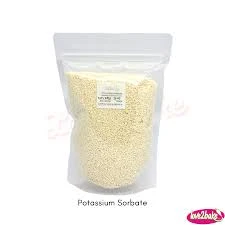TEL: 0086-311-88862036

Feb . 13, 2025 11:33
Back to list
food additives in bread
The world of food additives in bread is a fascinating one that crosses the intersection of necessity and innovation. For centuries, bread has been a dietary staple, yet its shelf life and texture have always presented challenges. This is where food additives come into play, extending shelf life, enhancing texture, and offering other vital benefits, all while ensuring safety and compliance with global food standards.
However, the topic of food additives is not without its controversies. Increasing consumer awareness and scrutiny have led some to question the health implications of these compounds. It is essential that manufacturers, nutritionists, and food scientists collectively work towards transparency and education. Clear labeling and communication about the safety and necessity of these additives can greatly enhance consumer trust. The topic of gluten is particularly noteworthy. With rising trends of gluten-free diets, many producers are tapping into the potential of additives that can replicate the texture and structure provided by gluten. Modified starches, along with specific enzymes, are often employed to mimic these characteristics, thus expanding options for those with gluten sensitivities or celiac disease. The influence of regulatory standards cannot be overstated. Global agencies like the FDA in the United States and EFSA in Europe rigorously evaluate and approve additives for safety and efficacy. This ensures that every loaf reaching the consumer meets strict health guidelines. The bread industry continually adapts to these guidelines, integrating new findings into practices to maintain compliance and consumer trust. Sustainability is also becoming a priority in the production and utilization of food additives. As the world moves towards more sustainable practices, companies are investing in renewable sources for additives. This not only reduces environmental impact but also aligns with evolving consumer values around sustainability. In conclusion, the use of food additives in bread is a testament to human innovation and adaptation. These substances not only cater to the demands for safety, longevity, and sensory quality but also align with the economic needs of modern food production. As consumers become more informed, the industry must continue to prioritize transparency, safety, and sustainability, ensuring that trust remains the cornerstone of producer-consumer relationships.


However, the topic of food additives is not without its controversies. Increasing consumer awareness and scrutiny have led some to question the health implications of these compounds. It is essential that manufacturers, nutritionists, and food scientists collectively work towards transparency and education. Clear labeling and communication about the safety and necessity of these additives can greatly enhance consumer trust. The topic of gluten is particularly noteworthy. With rising trends of gluten-free diets, many producers are tapping into the potential of additives that can replicate the texture and structure provided by gluten. Modified starches, along with specific enzymes, are often employed to mimic these characteristics, thus expanding options for those with gluten sensitivities or celiac disease. The influence of regulatory standards cannot be overstated. Global agencies like the FDA in the United States and EFSA in Europe rigorously evaluate and approve additives for safety and efficacy. This ensures that every loaf reaching the consumer meets strict health guidelines. The bread industry continually adapts to these guidelines, integrating new findings into practices to maintain compliance and consumer trust. Sustainability is also becoming a priority in the production and utilization of food additives. As the world moves towards more sustainable practices, companies are investing in renewable sources for additives. This not only reduces environmental impact but also aligns with evolving consumer values around sustainability. In conclusion, the use of food additives in bread is a testament to human innovation and adaptation. These substances not only cater to the demands for safety, longevity, and sensory quality but also align with the economic needs of modern food production. As consumers become more informed, the industry must continue to prioritize transparency, safety, and sustainability, ensuring that trust remains the cornerstone of producer-consumer relationships.
Next:
Latest news
-
What Is a Food Additive? Global Insights, Applications & Future TrendsNewsNov.24,2025
-
968 Sweetener: The Modern Solution for Health-Conscious SweeteningNewsNov.23,2025
-
Discover the Benefits and Uses of 965 Sweetener (Erythritol) | Tenger ChemicalNewsNov.23,2025
-
961 Sweetener - A Next-Gen Sugar Alternative for Health and IndustryNewsNov.23,2025
-
Understanding 960 Sweetener: The Modern Sugar Alternative for Health and IndustryNewsNov.22,2025
-
Everything You Need to Know About 955 950 Sweeteners – Benefits, Uses, and TrendsNewsNov.22,2025
-
953 Sweetener: Global Insights, Applications, and Future TrendsNewsNov.21,2025
HOT PRODUCTS
Hebei Tenger Chemical Technology Co., Ltd. focuses on the chemical industry and is committed to the export service of chemical raw materials.
-

view more DiethanolisopropanolamineIn the ever-growing field of chemical solutions, diethanolisopropanolamine (DEIPA) stands out as a versatile and important compound. Due to its unique chemical structure and properties, DEIPA is of interest to various industries including construction, personal care, and agriculture. -

view more TriisopropanolamineTriisopropanolamine (TIPA) alkanol amine substance, is a kind of alcohol amine compound with amino and alcohol hydroxyl, and because of its molecules contains both amino and hydroxyl. -

view more Tetramethyl Thiuram DisulfideTetramethyl thiuram disulfide, also known as TMTD, is a white to light-yellow powder with a distinct sulfur-like odor. It is soluble in organic solvents such as benzene, acetone, and ethyl acetate, making it highly versatile for use in different formulations. TMTD is known for its excellent vulcanization acceleration properties, which makes it a key ingredient in the production of rubber products. Additionally, it acts as an effective fungicide and bactericide, making it valuable in agricultural applications. Its high purity and stability ensure consistent performance, making it a preferred choice for manufacturers across various industries.





